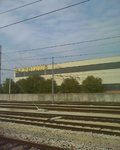Ghostdancer
Airman
One thing I've never seen much written on are the Aircraft of the Italian AF in WWII. I have heard that Italy did produce some fighters that were comparable to the best that Germany and Britain had at the outbreak of the war, I'm just not familiar with any of them.

